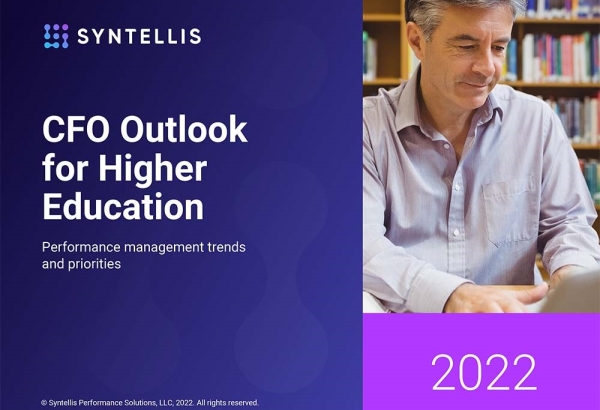Higher education institutions spent less time budgeting in 2021 than 2020, demonstrating improved agility and efficiency after the pandemic’s first year — 57% of higher education finance professionals reported a budgeting cycle of three to six months in 2021, an improvement from 50% in 2020. Just 10% of institutions had a budget cycle exceeding 10 months, much fewer than 26% in 2020, according to Syntellis’ 2022 CFO Outlook for Higher Education.
During those turbulent years, West Virginia University leaned on innovative budgeting processes and solutions from Axiom to expedite budgeting and improve overall financial agility.
Budgeting Hindered by Outdated Methods
For decades, West Virginia University relied on spreadsheets and Excel workbooks to produce budgets — a practice still used by about 40% of higher education institutions.
Here’s how it worked: Finance team members compiled data manually from various sources. After each department received the workbooks, department managers developed detailed budgeting plans and returned them to the budget office. These time-consuming processes led to tight timelines and concerns around the risk of human error, incomplete submissions, version confusion, and poor formatting.
Matt Tidd, Chief University Budget Officer at WVU, remembers the whole process was a headache and is grateful WVU adopted Axiom™ Budgeting & Forecasting and Axiom™ Tuition Planning just before the pandemic so his team could stay nimble and adapt to ongoing challenges.
Reliable Data Empowers Strategic Decision-Making
With Syntellis’ Axiom software — a cloud-based enterprise performance management tool for budgeting, forecasting, planning, reporting, scenario modeling, and more — WVU finance leaders could access the information they needed to meet rapidly changing demands early in the pandemic, whether they were at home or on the go.
Axiom’s custom reporting helped the finance team establish a daily dashboard of KPIs, including tuition, auxiliary revenue, salaries, wages, supplies, and other expenses. Nightly data exchanges from WVU’s HR and student information systems made the data readily available to the finance team. With near real-time visibility into daily spending, revenue trends, and other metrics, the WVU leadership team could make more informed decisions, such as establishing spending limitations and implementing a “hiring frost” when necessary.
Flexibility in Planning Drives Decision Confidence
Advanced, data-driven modeling from Axiom helped WVU use daily analysis to guide decision-making and planning throughout the pandemic.
When the time came to plan for the 2021-2022 academic year, university finance leaders used a phased approach — phase one: tuition and enrollment by major, phase two: labor planning, and phase three: operational budgets. Tidd feels confident his team has a clear view of tuition, fees, and other information or insights they need to succeed no matter what challenges lie ahead, thanks to timely, accurate, comprehensive data in Axiom.
Learn more about how Axiom helps colleges and universities drive strategic, confident decisions based on reliable data.
You also might be interested in these resources:

Improve Financial Planning to Future-Proof Your Institution

CFO Outlook for Higher Education: Planning for Uncertainty



